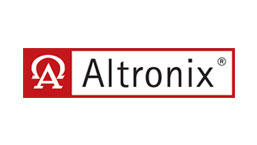Automated Secure Alarm Protocol Now Available to PSAPs around the Country
VIENNA, VA (August 27, 2015) — ADT Security Services, ranked as the largest central station in the nation, went live with ASAP® in the city of Richmond, VA on August 25. The news was met with cheers from security industry leaders who noted that it will cause a surge in the availability of the ASAP program to Public Safety Answering Points (PSAPs) around the country.
 “Having ADT go live is a milestone for the ASAP program,” said CSAA President Pamela J. Petrow, CEO of Vector Security. “With the size of their account base, ADT’s utilization of ASAP brings instant benefits to most PSAPs. This is critical because it allows the PSAP to better position the deployment of ASAP among their many initiatives.”
“Having ADT go live is a milestone for the ASAP program,” said CSAA President Pamela J. Petrow, CEO of Vector Security. “With the size of their account base, ADT’s utilization of ASAP brings instant benefits to most PSAPs. This is critical because it allows the PSAP to better position the deployment of ASAP among their many initiatives.”
ASAP was launched in 2011 as a public-private partnership, designed to increase the efficiency and reliability of emergency electronic signals from central station alarm companies to PSAPs. ASAP utilizes ANSI standard protocols developed cooperatively by the Association of Public Communications Officials (APCO) and the Central Station Alarm Association (CSAA).
With ASAP, critical life safety signals and accurate information is processed in seconds, not minutes, through the Nlets system of state-to-state PSAP communication, insuring that complete and accurate information is transmitted to the PSAP every time. The ASAP program has the potential to save PSAPs and emergency services millions of dollars.
“ADT’s implementation of ASAP is a win-win for ADT, the ASAP project, and the City of Richmond,” said Bill Hobgood, Project Manager, Public Safety Team Department of Information Technology City of Richmond, Virginia. “ADT will experience first-hand the benefits of using the ASAP program that so many other alarm central stations have experienced. This is the ASAP project’s biggest achievement yet. The city of Richmond’s Emergency Communications staff are thrilled about ADT joining the program and anxious for more alarm companies to follow.”
“ADT has supported ASAP thoroughly since its inception, and now that they are connecting, PSAPs throughout the country will take notice,” said Jay Hauhn, CSAA Executive Director. “With Protection One on line and other nationals at the doorstep, 2016 will be a great year for ASAP.”
In the August 2015 issue of APCO’s Public Safety Magazine (PSC), David Cutler, director of the Houston Emergency Center (HEC), reported savings of nearly $400,000 annually from reduced call volume following ASAP implementation. “These dollars were re-purposed within the department to expand training, supervisory and administrative positions,” Cutler said. He estimated that Houston will eventually achieve a 30% reduction in call volume as more alarm companies come on board with ASAP, for a savings of $1 million.
Also in PSC, Hobgood stated that “… all PSAPs currently using ASAP should experience a significant reduction in 10-digit call volume once ADT goes live with each agency. Those PSAPs will experience the luxury of having ADT’s alarm notifications delivered efficiently and accurately via the ASAP program. ADT monitors more than 6 million alarm systems, so the announcement is likely to [prompt] other alarm companies to step up and participate in the ASAP program as well.“
For more information on ASAP or to access ASAP resources (videos, webinars, training and outreach materials), contact CSAA at asap@csaaintl.org or 703-242-4670, or visit csaaintl.org/asap.
About CSAA International
The Central Station Alarm Association International (CSAA) is an internationally-recognized non-profit trade association that represents professional monitoring companies that are listed by a CSAA-approved Nationally Recognized Testing Laboratory, such as FM Approvals, Intertek/ETL or UL. CSAA is legally entitled to represent its members before Congress and regulatory agencies on the local, state and federal levels, and other authorities having jurisdiction (AHJs) over the industry. Since its incorporation in 1950, CSAA has served its members’ interests through education, online training, meetings and conventions, certification, insurance, and industry standards. www.csaaintl.org. For more information, contact Elizabeth Lasko at CSAA, 703-242-4670 x 16.
 On November 1, Hamilton County / Chattanooga, TN became the 30th 9-1-1 PSAP (Public Safety Answering Point) in the United States and the 1st in Tennessee to implement the ASAP-to-PSAP service (ASAP®). Tennessee is the 11th state plus the District of Columbia now open for ASAP traffic.
On November 1, Hamilton County / Chattanooga, TN became the 30th 9-1-1 PSAP (Public Safety Answering Point) in the United States and the 1st in Tennessee to implement the ASAP-to-PSAP service (ASAP®). Tennessee is the 11th state plus the District of Columbia now open for ASAP traffic.


 ponses to dispatch.
ponses to dispatch.
![IMG_1747[1]](https://themonitoringassociation.files.wordpress.com/2016/08/img_17471.jpg)








